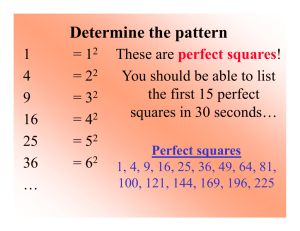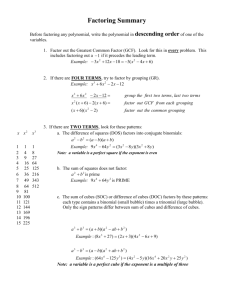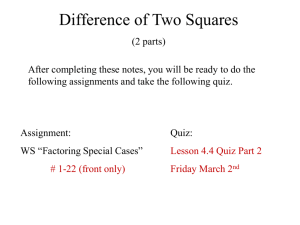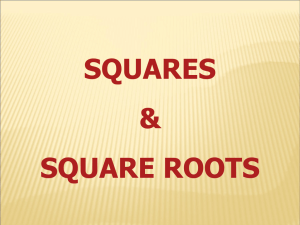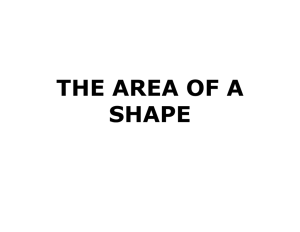Factoring Special Cases
advertisement
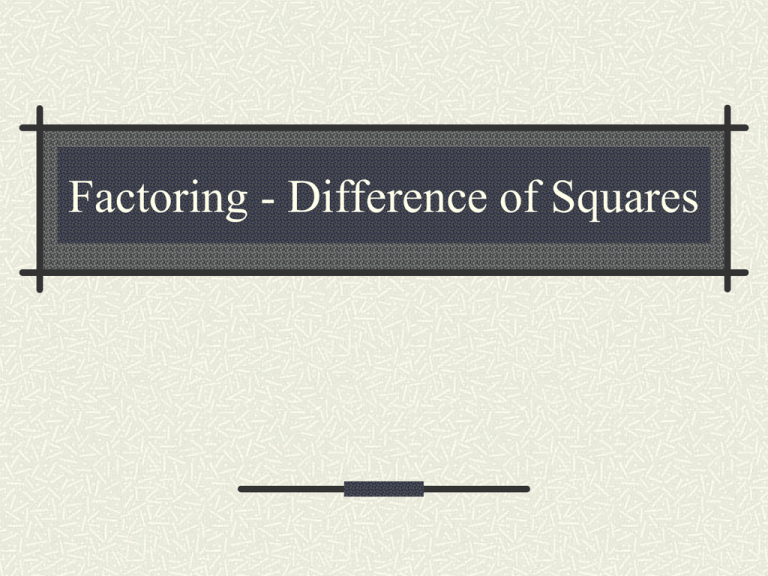
Factoring - Difference of Squares What is a Perfect Square What numbers are Perfect Squares? Squares 1 1 Perfect Squares 2 2 4 2 3 9 2 4 16 2 5 25 2 6 36 2 1 4 9 16 25 36 49 64 81 100 x 2 x 4 x 6 x 8 x 10 Factoring: Difference of Squares Count the number of terms. Is it a binomial? Is the first term a perfect square? Is the last term a perfect square? Is it, or could it be, a subtraction of two perfect squares? x2 – 9 = (x + 3)(x – 3) The sum of squares will not factor a2+b2 Using FOIL we find the product of two binomials. ( x 5)( x 5) x 5 x 5 x 25 2 x 25 2 Rewrite the polynomial as the product of a sum and a difference. x 25 ( x 5)( x 5) 2 Conditions for Difference of Squares x 36 2 Must be a binomial with subtraction. First term must be a perfect square. (x)(x) = x2 Second term must be a perfect square (6)(6) = 36 x 6x 6 Check for GCF. Sometimes it is necessary to remove the GCF before it can be factored more completely. 5x 45y 2 5 x 9y 2 2 2 5x 3 y x 3 y Removing a GCF of -1. In some cases removing a GCF of negative one will result in the difference of squares. x 16 2 1 x 16 2 1x 4x 4 Difference of Squares 4 x 25 2 x 52 x 5 2 4Try 2 x 8 2x You 2x 2x 2 2 2 b 100 1 b 100 2 2 1st.not a perfectsquare. No GCF. PRIME! y 16 y 4 y 4 2 Factoring - Difference of Squares

